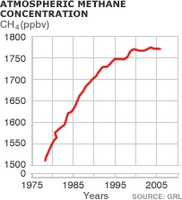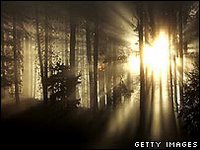 The Colorado River in the southwestern United States and northwestern Mexico, and drains a part of the arid regions on the western slope of the Rocky Mountains. The natural course of the river flows into the Gulf of California, but the heavy use of the river as an irrigation source for the Imperial Valley has dessicated the lower course of the river in Mexico such that it no longer consistently reaches the sea.
The Colorado River in the southwestern United States and northwestern Mexico, and drains a part of the arid regions on the western slope of the Rocky Mountains. The natural course of the river flows into the Gulf of California, but the heavy use of the river as an irrigation source for the Imperial Valley has dessicated the lower course of the river in Mexico such that it no longer consistently reaches the sea.Here are some interesting facts about the Colorado River:
- it is approximately 2,330 km long
- it drains 629,100 km²
- the total flows of the river range from 570 m³/s in droughts to 28,000 m³/s in severe floods.
- the Colorado River basin is home to fourteen native species of fish
Wikipedia has some excellent background information on the Colorado River, and includes some information on the importance of the river to the wildlife.
The ecosystems were damaged by the construction of the Glen Canyon Dam in 1963. The construction of the dam has not only affected the river's physical characteristics, but has adversely affected the ecology of the Grand Canyon.
Flash floods that would at one time scour the canyon clean and deposit fresh sand along the beaches no longer occur. The water temperature, which used to get as warm as 80 degrees F, is now icy-cold all year and averages around 42 degrees F, which has caused some of native fish that used to inhabit the river tobecome extinct and still others are endangered. The introduction of the Rainbow Trout, a non-native species has caused problems, as it thrives in the colder waters and makes it even more difficult for the native fishes to survive.
Other changes, including the extraction of water from the Colorado's channel, have also had an impact on the river. In the upper Colorado River basin states, Wyoming, Colorado, Utah, and New Mexico, 90% of the water used is spread on land irrigated for crops, leaving 10 % for urban and other uses. Of the 1.6 million acres irrigated in the upper basin, feed for livestock is raised on 88% of the irrigated land. In the lower basin states, California, Arizona, and Nevada, 85% of water goes to agricultural purposes. Rapidly growing cities such as Las Vegas, Phoenix, and areas of southern California, all of which use some Colorado River water, still only account for less than 15% of these three states' water use.
I've also tracked down this site, which has some really detailed and useful information about the Colorado River.







